Spain's Famous Round Cake for The Epiphany
Thursday, December 28, 2023
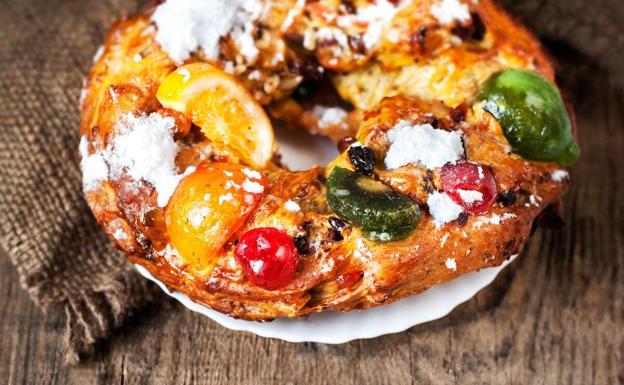
Twelfth Night is the festival marking the coming of the Epiphany and concluding the Twelve Days of Christmas. In medieval and Tudor England, the Twelfth Night marked the end of a winter festival that started on All Hallows Eve — now more commonly known as Halloween. The Lord of Misrule symbolises the world turning upside down. On this day the King and all those who were high would become the peasants and vice versa. At the beginning of the Twelfth Night festival, a cake that contained a bean was eaten, and the person who found the bean would rule the feast. Midnight signalled the end of his rule and the world would return to normal. The common theme was that the normal order of things was reversed.
The origins of the Three Kings' Cake appear to date back to the 2nd century BC, when the Romans celebrated the Saturnalia – also known as the Slaves' Festival as they didn't have to work – with a round pastry that concealed a bean. The bean symbolised the imminent arrival of prosperity thanks to the Spring and to Saturn, the god of agriculture. Its symbolism has changed greatly since then, and the recipe even more-so. The Romans spread it across Europe, but its consumption died out with the arrival of Christianity. However the French preserved the tradition and it was common among bourgeois families to eat the cake, which they prepared with a coin inside it.
Food and drink are at the centre of the celebrations in modern times, and all of the most traditional ones go back many centuries. Around the world, special pastries and bread, such as Roscón de Reyes, La Galette des Rois and King cake are baked on the Twelfth Night and are eaten for the Feast of the Epiphany celebrations. In English and French customs, a Twelfth Night cake was baked to contain a bean and a pea, so that those who received the slices containing them should be designated king and queen of the night’s festivities.
Over the centuries this tradition has changed. Gold coins began to be introduced as a reward to whoever found the Roscón treasure, it was later decided to hide a figurine of King and a bean at the same time to find out who was the 'lucky one' and who was the fool with the bean ... until today. Nowadays most Roscón have the figurine of a King and dehydrated bean, only now the person who finds the bean is not only the fool but also has to pay the cake!
Traditionally, however, there was a time in Spain when whoever found the trinket (which would have been a figurine of baby Jesus) had to take it to the nearest church on February 2, Día de la Candelaria (Candlemas Day), which celebrates the presentation of Jesus in the Temple. According to the Jewish tradition, an infant was to be presented to God in the Temple forty days after his birth. The use of candles on Candlemas represents the light of Christ presented to the world. The Kings’ cake (Roscón) in Spain is traditionally eaten after lunch on the 6th of January and if you fancy making one this year, here is a simple recipe:
Ingredients:
Sourdough mix:
100 g of strong flour
60 ml of warm milk
2 g yeast
Decoration:
1 beaten egg
Glacé fruits
Almonds
Sugar
For the final dough:
162 g of sourdough
330 g of strong flour
60 ml of milk cooked with cinnamon and the peel of 1 orange
2 eggs
80g sugar
30 ml of honey
110 g butter
15 g of pressed yeast (or 5 g of dry baker's yeast)
3 teaspoons of rum
2 teaspoons of random water
Zest of half a lemon
5g salt
Preparation:
The day before, prepare the sourdough. To do this, mix the flour, milk and yeast and knead it sufficiently so it is well mixed.
Let it ferment for 30 minutes at room temperature and then leave it in the fridge for at least 12 hours.
The night before you also have to make the milk infusion with, cinnamon and the peel of 1 orange without the white part. Heat the milk with the ingredients to just before boiling point and then remove from the heat and cover. Let it cool and then refrigerate.
The next day, mix all the ingredients for the final dough, except the sugar and butter.
You will have to knead it in 3 steps:
1) 5 minutes as is.
2) 5 minutes in which the sugar is incorporated in 2 batches until you can see no lumps are left each time.
3)Now the cold butter is added and kneaded for another 10 or 15 minutes until the dough has absorbed all the butter and is smooth.
Let it ferment for about 2 hours. Form into a ball. Wait 15 minutes and then form into an even ring
Ferment for another 2 and a half or 3 hours: it almost triples its volume (then hide the figurine and the dehydrated bean).
Brush, decorate and bake in an oven at 180 ° C. Baking time is about 20 minutes (if fan assisted; if not, slightly longer).
Let cool on a rack. Once cold, the roscón can be cut in two halves and filled with sweetened whipped cream or truffle cream, as you prefer.
However, if this seems like too much effort they are available in all supermarkets across the country. According to one of Spain's leading consumer organisations, the OCU, after analysing Roscones in nine major supermarkets, the best value-for-money Roscón de Reyes comes from Día and retails at €11.71 for a kilo.
The OCU looked at Roscones sold in Eroski, Carrefour, Alcampo, El Corte Inglés, Ahorramás, Mercadona, Lidl, Aldi and Día, and said the best quality ones were the cream-filled versions from Eroski and Alcampo, followed by those sold at El Corte Inglés, although in terms of price and quality combined, Día's cream-filled one came out top.
They retail at between €6 a kilo in Carrefour, Aldi and Lidl, and €17 a kilo in El Corte Inglés, although the OCU warned that in most cases, the cheapest prices reflected the quality of what you're buying.
Those with the lowest price tags, in general, had a greater quantity of vegetable oils and fats – coconut and palm oil – compared with the higher-priced ones, which contained cream and butter.
This said those seeking to avoid animal-based produce would find the cheaper ones suited them better.
Whatever you decide to do - Happy New Year!
 0
Like
Published at 10:59 AM Comments (0)
0
Like
Published at 10:59 AM Comments (0)
Spain’s Christmas Lottery: A Unique and Extraordinary Tradition
Friday, December 22, 2023
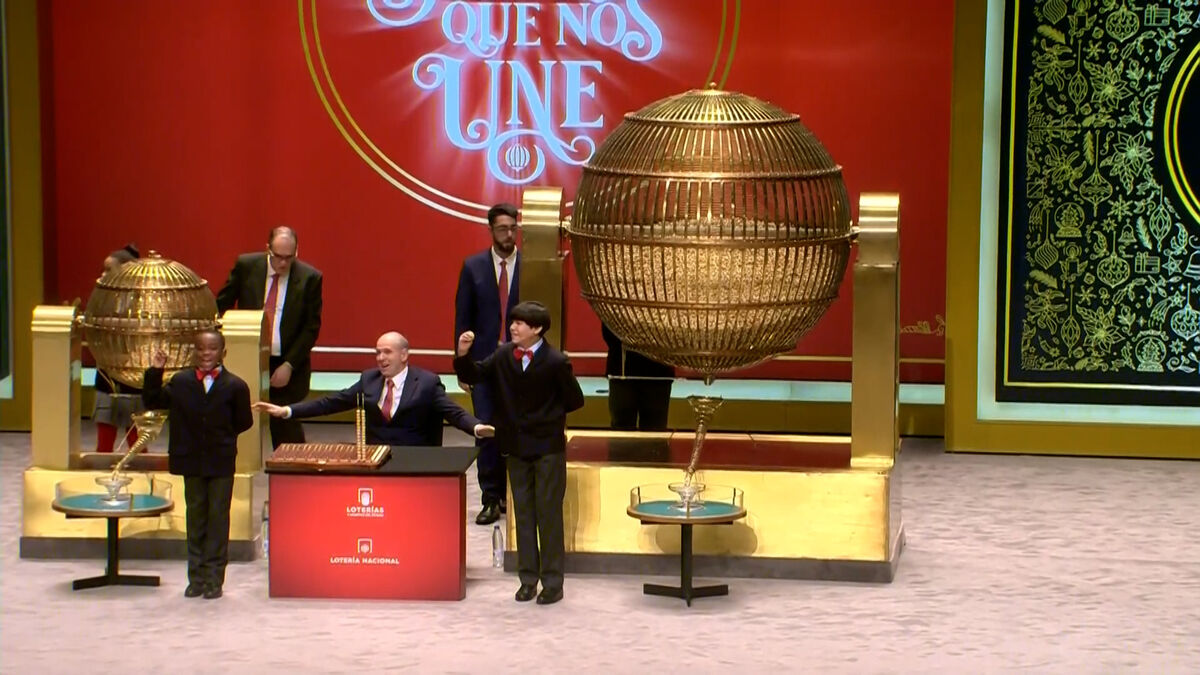
In a world replete with lotteries, Spain's Christmas Lottery, also known as "El Gordo" (The Fat One), stands out as particularly unique, special, and different from the others. This lottery's exceptional characteristics stem from its long history, massive prize pool, and widespread participation, demonstrating how much more than a mere lottery it truly is.
Historical Importance
Founded in 1812, El Gordo is one of the oldest lotteries still in operation globally. It played a significant role in Spain's history, enduring through political upheavals, civil war, and cultural shifts. The Lottery tickets, featuring unique codes and artwork, even served as a covert communication method during the Spanish Civil War. This historical importance imparts the El Gordo Lottery a remarkably special status and indicates its cultural significance in the Spanish community.
Pioneering Economic Structure
Spain's Christmas Lottery differs from many others due to its pioneering economic structure. Instead of a model wherein a single person wins an astronomical sum, the prize pool in El Gordo, typically abundant, is distributed across thousands of winners. The likelihood of winning, therefore, is much higher than in other lotteries. This structure was designed to spread wealth among as many people as possible during the Christmas season - embodying the spirit of sharing and goodwill.
High Participation Rate
The El Gordo Lottery enjoys an incredibly high participation rate, with over 75% of Spain's adult population purchasing tickets. Even children participate enthusiastically in this event. Selected students from Madrid’s San Ildefonso school traditionally sing the winning number, adding to the lottery's distinctive charm.
The high participation rate doesn’t stop within the Spanish borders. The lottery is open to international participants, with millions of people worldwide joining in, making it a truly global event.
Social Impact
The lottery system is structured in a way that allows groups, families, or colleagues to purchase tickets collectively. This kind of communal participation fosters unity and camaraderie and effectively turns the lottery into a social event. Sharing winning tickets has turned into an eagerly anticipated tradition for many Spaniards, fueling a sense of community and shared prosperity.
A Cultural Phenomenon
The special allure that makes El Gordo so unique, however, transcends its economical, social, and historical schemes. This lottery is truly ingrained in Spain's culture, marking a significant moment in their holiday season. For many Spaniards, Christmas wouldn’t be complete without it, making this lottery more of a cultural phenomenon than a simple chance at winning money.
Through its historical significance, unique economic structure, high participation rates, social impact, and cultural importance, El Gordo has become more than a lottery. It is a testament to the Spanish spirit of unity, camaraderie, and shared prosperity. Not only is it different from other lotteries around the world, but it also offers a fascinating insight into Spain's rich culture and traditions.
 3
Like
Published at 1:27 PM Comments (1)
3
Like
Published at 1:27 PM Comments (1)
Popular Spanish Seafood Recipes for Christmas
Saturday, December 9, 2023
Spain, a nation steeped in rich culinary traditions, boasts diverse gastronomy that varies from region to region. However, one universal aspect of Spanish cuisine during Christmas is the significant emphasis on seafood and fish dishes. This lean, flavourful fare of the Mediterranean is a choice of food over Christmas, celebrated through a variety of popular recipes. Let's take a look at some:
1. Langostinos a la Plancha
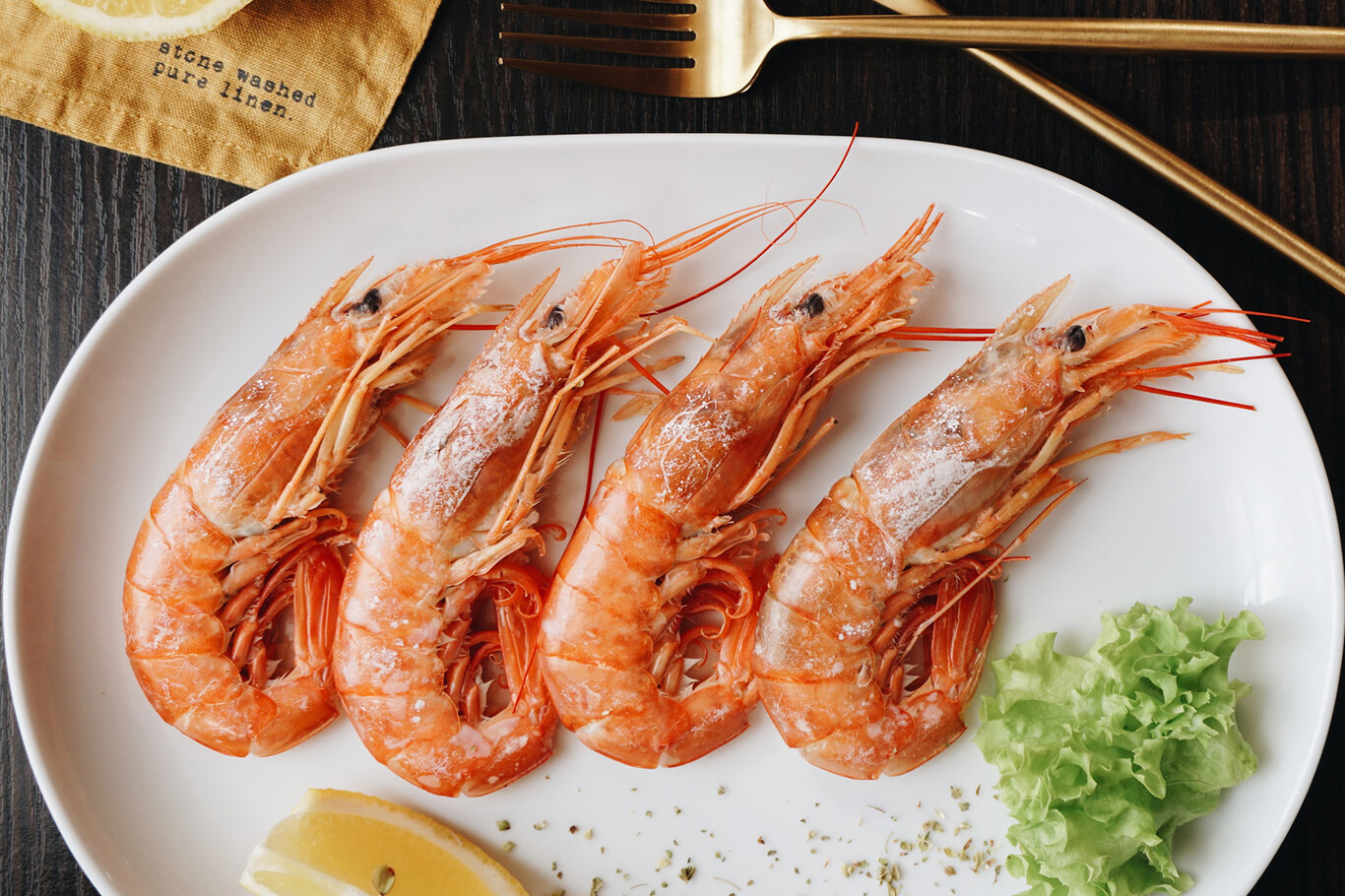
'Langostinos a la Plancha' or grilled prawns is a perennial Spanish Christmas favourite. This dish is exceptionally straightforward, consisting merely of fresh prawns, sea salt and olive oil. The key to perfection lies in grilling the prawns on high heat for just the right amount of time to attain a deliciously chargrilled flavour while ensuring the prawns remain tender.
2. Gambas al Ajillo
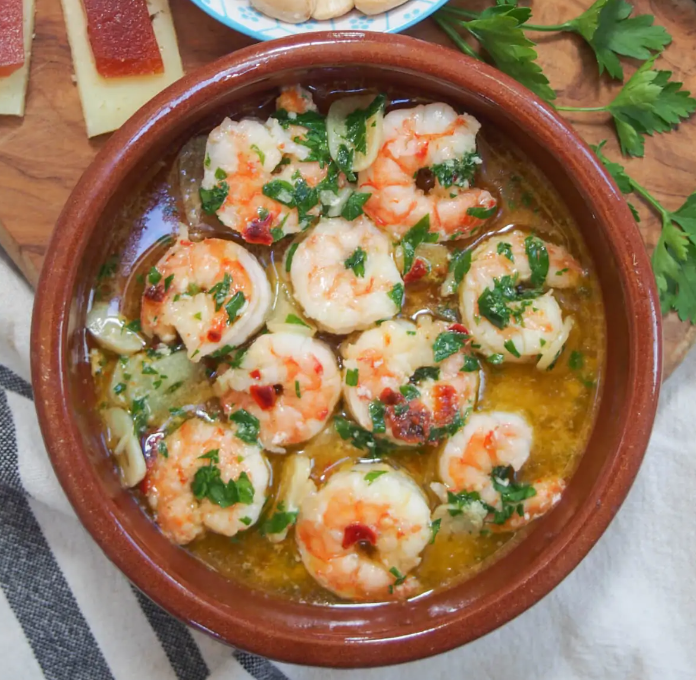
'Gambas al Ajillo' or garlic shrimp is another beloved Spanish classic. Sautéed in a simmering mixture of garlic, hot peppers, and olive oil, these succulent morsels are imbued with a rich, spicy flavour that will warm up any Christmas gathering. The dish is traditionally served in a 'cazuela' (terracotta dish), accompanied by crusty bread to mop up the savoury sauce.
3. Merluza a la Koskera
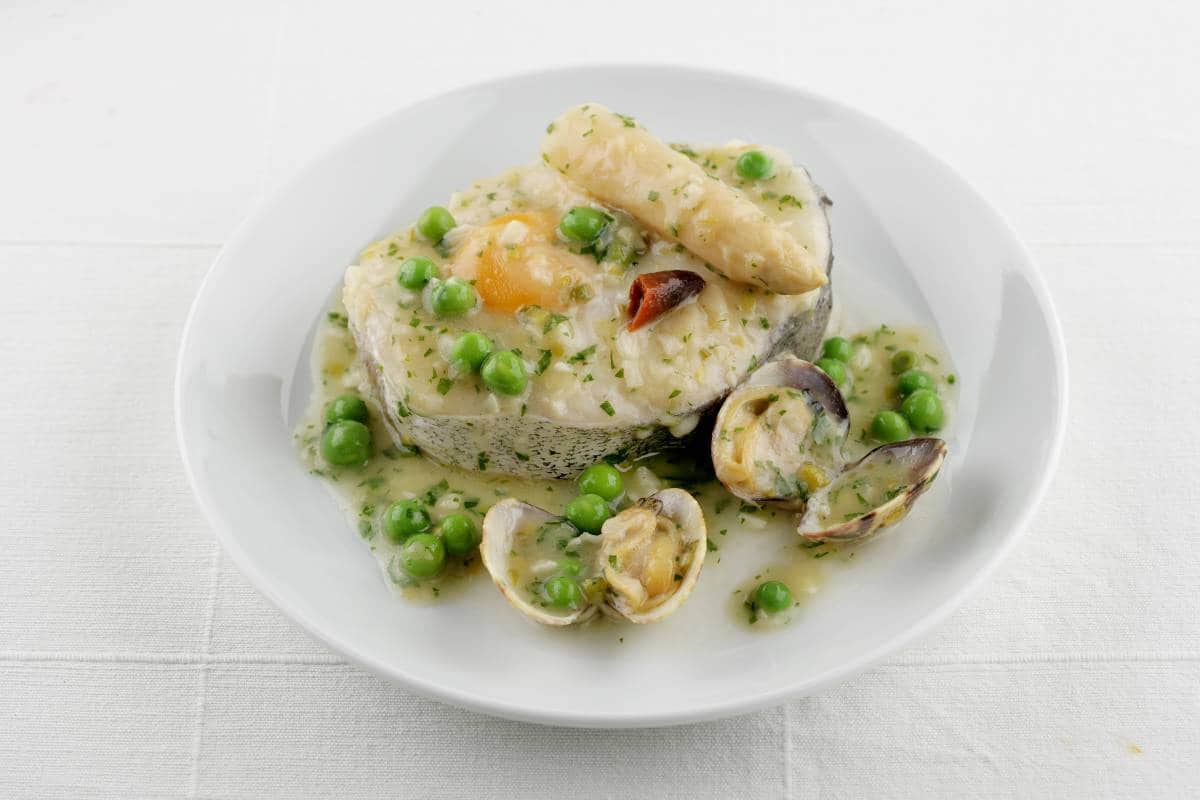
Merluza a la Koskera, also known as Hake in Green Sauce, is a traditional Christmas dish hailing from Spain's Basque country. This recipe features hake fillets cooked in a fragrant sauce made of garlic, parsley, and white wine. It is then garnished with clams and white asparagus, offering a warming, filling main course for Christmas dinner.
4. Bacalao a la Vizcaina

Bacalao a la Vizcaina, or Salt Cod in Biscayne Sauce, is a renowned Spanish dish traditionally eaten on Christmas Eve. The cod is first desalted by soaking it in water for a couple of days before being cooked in a rich and complex tomato and red pepper sauce. This flavourful dish is an integral part of the Spanish 'Nochebuena' (Good Night) celebration.
5. Calamares en su Tinta

'Calamares en su Tinta,' or Squid in its Ink, is another unique recipe commonly served during the festive season in Spain. This Basque Country speciality comprises tender squid pieces cooked in a rich, black sauce made from the ink of the squid. The result is a delightfully briny and robust dish that pairs well with white rice
6. Zarzuela de Mariscos

Zarzuela de Mariscos, or Seafood Medley, is a grand celebration of the bounty of Spanish seas. It comprises a harmonious blend of fish and shellfish, such as monkfish, prawns, mussels, and clams, cooked in a deeply flavoured tomato, onion, and white wine broth, aromatic with saffron and paprika. Decorated with crusty bread and rustic aioli, this Catalan classic is a quintessential centrepiece for a Spanish Christmas feast.
Spain's vast array of seafood delicacies pays testament to the country's rich maritime culture and tradition. The fusion of simple yet high-quality ingredients yield dishes that don't just grace the Christmas table but also represent the heart of Spanish celebrations – unity, warmth, and abundance. Enjoy these delectable seafood dishes for a distinctive and memorable Spanish Christmas!
 0
Like
Published at 10:34 AM Comments (0)
0
Like
Published at 10:34 AM Comments (0)
Jai Alai - The Basque Sport
Friday, December 1, 2023
Among all the diverse range of sports that span across our earth, there's one sport that arguably eclipses the rest in terms of sheer speed, and that is 'Jai Alai'. Widely considered as the fastest ball game globally due to the velocity achieved by the ball during gameplay.
Originating from the Basque region of Spain, meaning 'cheerful festival', Jai Alai (pronounced "Hi-Li") is a sport involving a ball launched at high speeds within a three-walled court. The players propel the ball using a curved mitt, and the game is sometimes referred to as Basque pelota. In fact, in 1904, Jai Alai debuted in the St. Louis, Missouri, USA, Olympic Games as a demonstration sport.
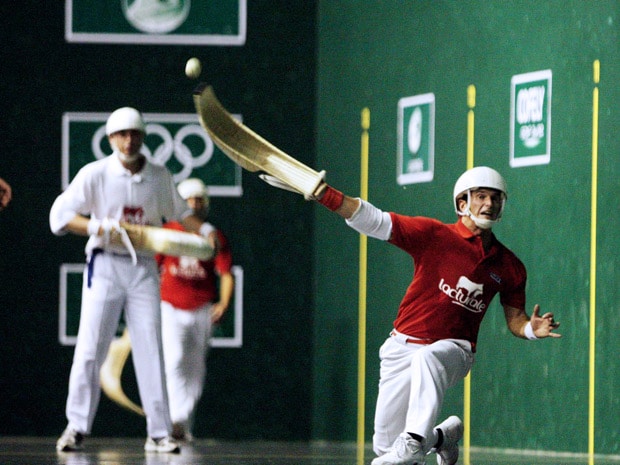
The Speed of the Game
It is not an exaggerated claim that Jai Alai holds the record for the fastest ball game. The International Court Tennis Federation recorded the fastest Jai Alai ball at an unbelievable 188 miles per hour (302 kilometres per hour). Considering that the fastest baseball pitch recorded is 105.1 mph by former Cincinnati Reds closer Aroldis Chapman, the speed of Jai Alai surpasses this record by a significant amount.
Playing Jai Alai
The play begins when a player (serving) bounces the ball against the floor, after which it becomes airborne and is then struck towards a front wall. The ball is required to land in a designated area. The opposing player must catch the ball in the air or after the first bounce and return it in the same way. Games are usually played to a point total of 7 or 9, and the play continues, with each game lasting about 20 to 40 minutes.
The players use a device called a Cesta Punta, a long, curved basket made of pyrena (cherry) wood with a glove attached, to catch and launch the ball. As opposed to holding and throwing the ball, the Cesta Punta allows the player to whip the ball with tremendous velocity.

Jai Alai's Popularity and Decline
During the 1980s and early 1990s, Jai Alai held its own in popularity and was a popular betting alternative in the United States, comparable to horse and greyhound racing. However, the sport's popularity waned for several reasons, including a players' strike in the early 1990s and the rise of other forms of gambling.
Today, it still enjoys popularity in Spain, France, Mexico, and China. Though its popularity has waned, Jai Alai's record-breaking speed, breathtaking agility, and unique blend of finesse and power continue to captivate those fortunate enough to witness a game.
In conclusion, despite the sport's lesser-known status, Jai Alai stands as a testament to human athletic potential. It is far more than the fastest ball game globally; it represents a vibrant and exciting part of sporting culture that deserves to be preserved and celebrated.
 0
Like
Published at 9:38 PM Comments (0)
0
Like
Published at 9:38 PM Comments (0)
Spam post or Abuse? Please let us know
|
|